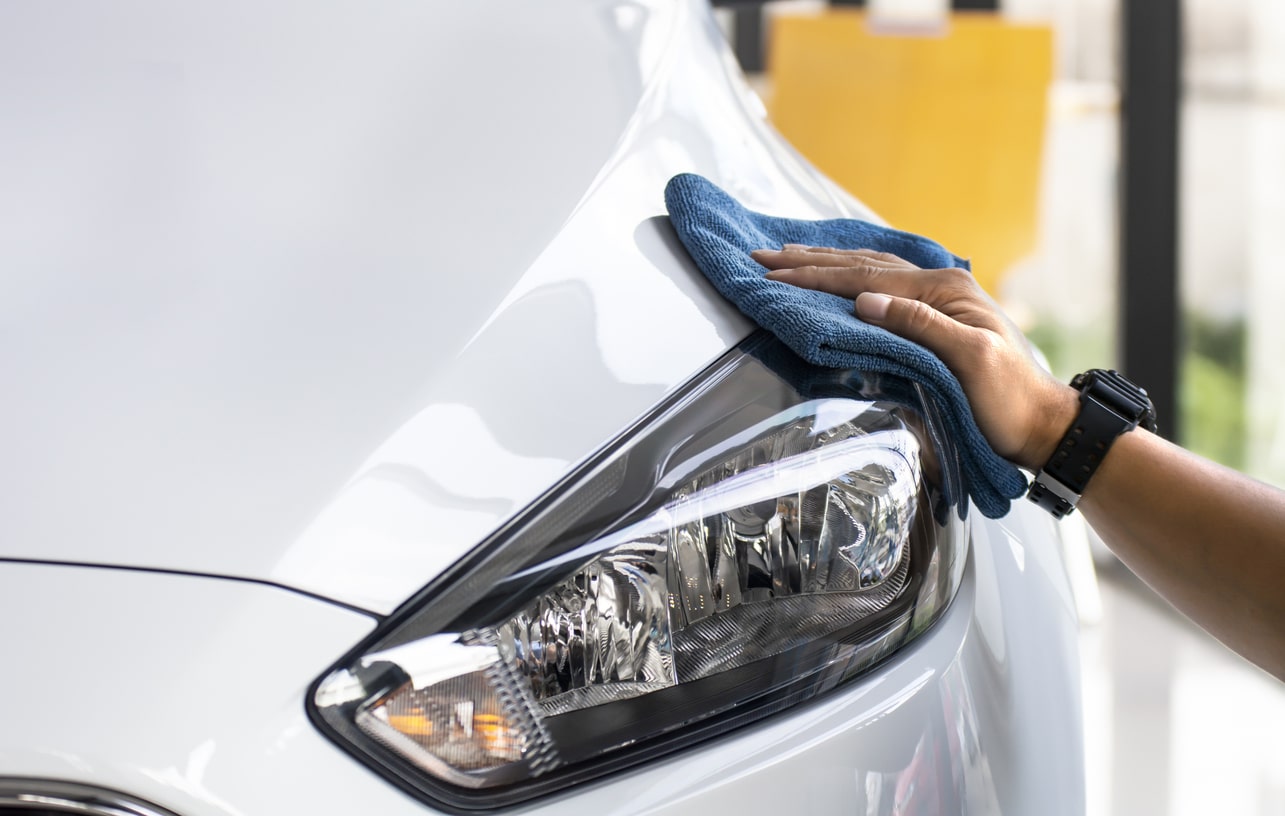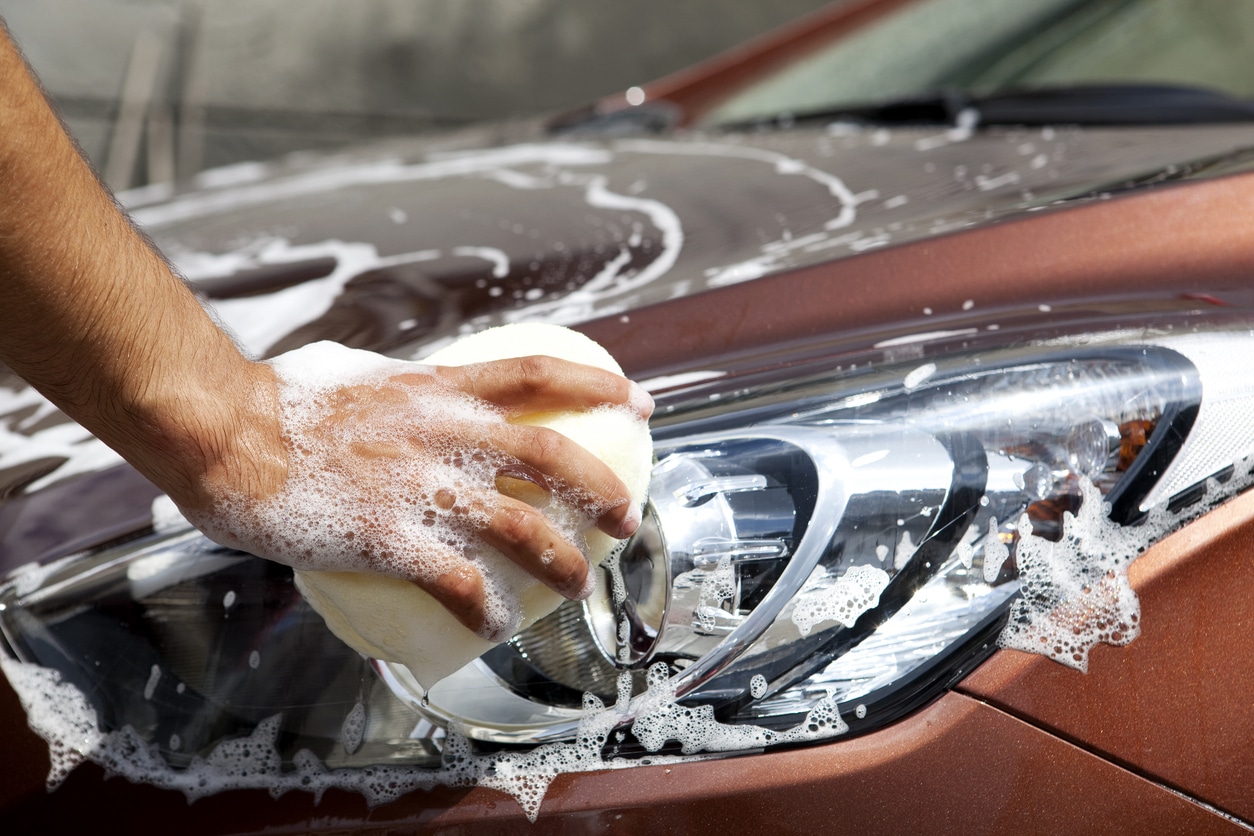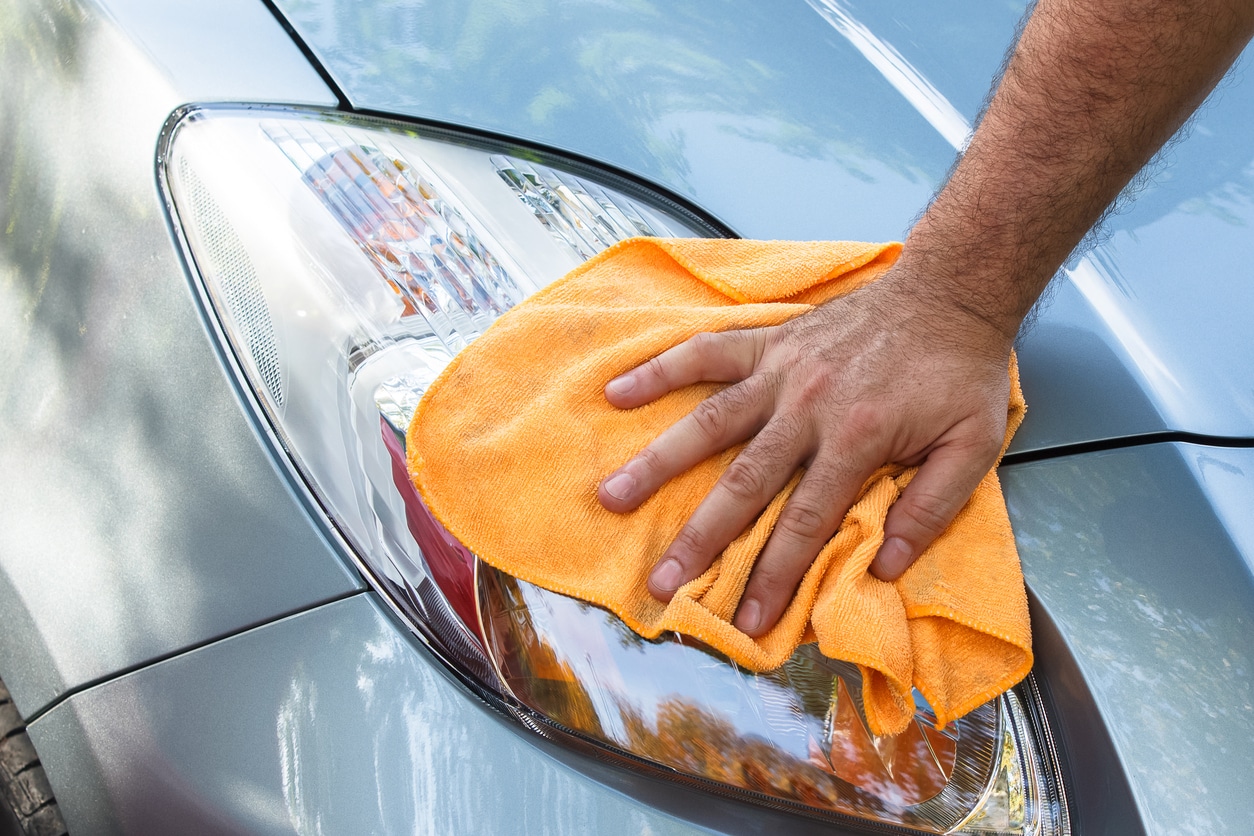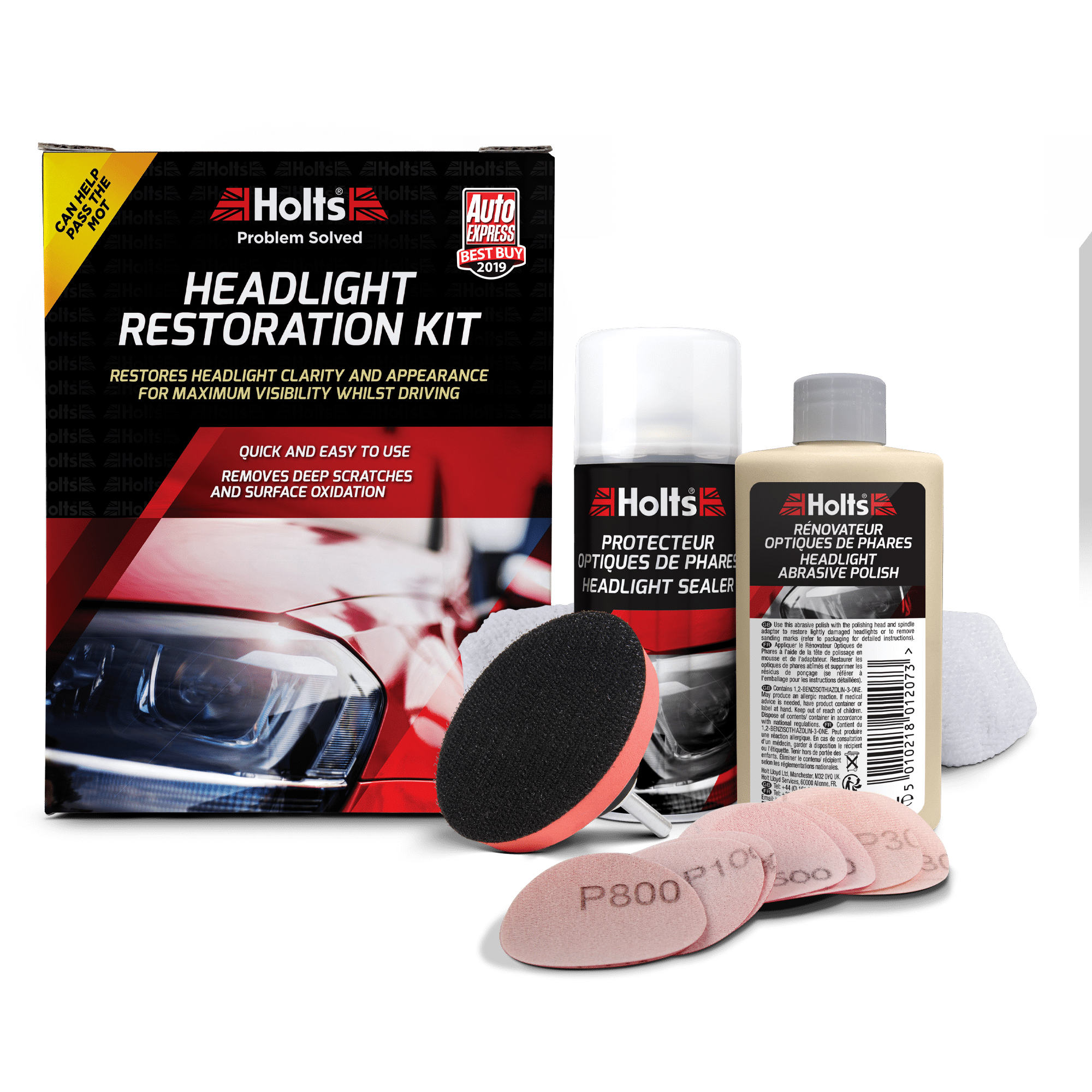Are your car’s headlights starting to show signs of age, wear and tear? Maybe they look a little cloudy, yellow or just aren’t as bright as they used to be? If this is the case, it’s worth restoring them, as you could fail your MOT if the problem is causing issues with visibility and your view of the road.
Lots of things can cause headlights to discolour or turn cloudy, but thankfully restoring them is a job that you can do yourself at home with the right tools and know-how. Our guide covers the basics of headlight restoration, and provides tips and advice on how to maintain car lights.
Quick Links
- Why Do Car Headlights Become Cloudy?
- Headlight Bulb Lifespans
- Should I Replace or Restore my Car Headlights? How to Know
- How to Restore Car Headlights
- How to Clean Car Headlights
- Additional Tips and Advice for Headlight Care
Why Do Car Headlights Become Cloudy or Yellow?
Over time, the plastic covering car headlights can become foggy, cloudy or start to turn yellow, stopping the lights from shining as brightly, and possibly reducing your visibility. But why is it that headlights do this?
Here are some of the most common causes of cloudy or yellow headlights:
- Oxidation is when the polycarbonate lens which covers the acrylic headlight is worn away by UV radiation. As a result, the acrylic develops tiny cracks which make the lens look cloudy.
- Road damage can change the appearance of car headlights. When small stones and debris hits the plastic fascia of the headlights, they cause small marks which can cause the lights to look cloudy or foggy.
- Dirt and pollution can change the appearance of plastic car headlights over time, when a thin layer builds up on the surface. This opaque layer of dirt diffuses and dims the light, interfering with the strength and direction of the main beam.
- Condensation can cause a build-up of moisture behind the headlight cover, resulting in a foggy appearance that can weaken the strength of the lights. Condensation can occur if the headlight cover hasn’t been reinstalled properly following a bulb change, or if there’s a problem with the seal around the edge of the plastic.

Headlight Bulb Lifespans
Of course, a damaged or worn headlight casing may not be the main cause of poor headlight performance. Headlight bulbs have a limited lifespan and will naturally dim over time, so you’ll need to replace the bulbs periodically to ensure maximum performance and visibility out on the road.
Here’s a quick look at the typical lifespans of car headlight bulbs, including halogen, LED and Xenon units.
| Car headlight bulb type | Typical lifespan in hours |
| Halogen | 500-1000 |
| Xenon | 10,000 |
| LED | 30,000 |
Should I Replace or Restore my Car Headlights? How to Know
It can be difficult to know when you need to replace your headlights vs. when it’s OK to restore them. You’ll need to check your headlights regularly and perform a visual inspection of the headlight casing to decide on the best course of action.
Generally speaking, if visibility is poor and less than the 100-metre rule listed in the Highway Code, you may need to replace your car’s headlight bulbs. Restoring the transparent headlight casing may help a little, but it’s unlikely to restore your headlights to the required level needed for optimal visibility.
Driving at night on an unlit road is one of the best ways to check the effectiveness and performance of your car’s headlights. If you’re struggling to see up to 100 metres ahead, this is a tell-tale sign that the bulbs need to be replaced.
How to Restore Car Headlights
The good news is, it is possible to restore car headlights, even if yours have been affected by oxidation or road damage. Our step-by-step guide can show you how to get the job done.
What You’ll Need
- Holts Headlight Restoration Kit – which includes sandpaper, buffing tool, polish and sealant, as well as a drill sanding attachment which can be used with a standard household drill.
- Masking tape
- Car shampoo and sponge
- Drying towel or chamois
- Drill, for electric sanding (recommended) – you can also do this job by hand if you have the right sandpaper and a buffing tool
- Chamois leather or paper towel, for finishing
Step 1
Start by washing the headlights with standard car shampoo, before drying them with a chamois or microfibre towel. You can either remove the headlights for this job or leave them on your car. Just remember to cover the surrounding area with masking tape to protect the paintwork and plastic trim of the headlight.
Step 2
Attach the drill sanding attachment (supplied with the Holts Headlight Restoration Kit) to your drill and begin by using the P800 sandpaper. Wet the headlight and begin sanding, working in even lines over the surface of the headlight to remove scratches and oxidation. You MUST keep the headlight wet while you’re sanding to prevent the drill sander burning the plastic and causing more damage.
Step 3
Continue sanding, working through the different sandpapers, which include P1000, P1500 and P3000, until you have a smooth, consistent finish.
Step 4
Attach the buffer to the drill and apply a small amount of the polish provided. This will remove any remaining sanding marks and restore a clear finish to the plastic. Remember to work in even lines to get the best possible finish.
Step 5
Spray the headlights with the sealer provided, which will help protect the finish and prevent the headlight from becoming hazy and oxidised in the future. Finish by giving the headlight a final buff with a dry chamois or paper towel, and you’re done.

How to Clean Car Headlights
Cleaning your car’s headlights regularly will not only ensure effective day-to-day performance but will also help to reduce the long-term wear and tear associated with exterior plastics. As part of your regular wash cycle, you should make sure that the lights are clean, preferably using standard car shampoo. Removing the thin layer of dirt and pollution from the lights can prevent discolouring, and it will reduce the effects of UV radiation.
Car headlights are relatively easy to keep clean with a quality car shampoo. Apply the detergent to the headlight casings in the same way that you would to the paintwork, leaving it to work for a couple of minutes before wiping it off. This will allow the shampoo to absorb dirt and particles, for effective cleaning in a single application.
There are, of course, other ways to clean and maintain car headlights, including a couple of homegrown, DIY remedies that offer only mixed results – using toothpaste and fizzy drinks being a couple of examples. From our point of view, we would avoid using these types of products and any other substances that aren’t developed specifically for use on cars, as they can cause damage if used incorrectly. It’s much better to stick to dedicated car cleaners and restoration kits.
Additional Tips and Advice for Headlight Care
Restoring your car’s headlights to their original condition is one thing, but how do you prevent oxidation, marks and discolouring in the first place? There are a few things you can do to maintain the appearance of your headlights, reducing the risk of them becoming foggy, cloudy or yellow over time. Here are a few practical tips to try:
- When cleaning your car’s paintwork, don’t polish the headlights. Polishes with any grit content can wear down the clear coat, making them more susceptible to UV, pollution and marks. If you do want to polish the lights, make sure the product you use doesn’t contain any grit, or use a clear coat sealant spray afterwards to restore the protective coating of the lights.
- Keep the lights clean. As part of your regular wash cycle, you should make sure that the lights are clean, preferably using standard car shampoo. Removing the thin layer of dirt and pollution from the lights can prevent discolouring, and it will reduce the effects of UV radiation.
- Park out of direct sunlight in the summer months to prevent UV rays damaging the headlights. If you’re storing a car for a long period, we’d recommend covering it to stop UV eating away at the protective clear coat of the headlight covers.
Enjoyed this Holts how-to? Head to the blog for more DIY car maintenance tips and advice. Or, if you’d like to find out about our complete range of products, feel free to check out our homepage.



